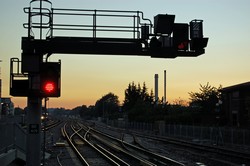High-tech signalling streamlines EU rail transport
In the last two decades, EU railway stakeholders have been working fervently to harmonise railway signalling and foster cross-border interoperability, in line with the European Rail Traffic Management System (ERTMS). Together, key railway actors worked on articulating specifications for new interlocking systems and reducing the life-cycle cost of signalling systems. The EU-funded project INESS (Integrated European signalling system) took up the challenge to streamline railway operation, enhance safety and contribute to implementing the ERTMS. Building on the research of a similar previous project, EuroInterLocking, the project team mapped the value chain of interlocking systems and defined a new data model, including needed adaptations and applicability. It completed reports on a life cycle-based cost model for interlocking systems, market-specific cost drivers and cost-saving potential within the interlocking life cycle. The team also mapped necessary requirements and interfaces to produce a strategy for verification and validation for new-generation interlocking systems. It then studied safety constraints related to the interfaces and proposed one of several harmonised structures, outlining viable migration strategies to the new system. This led to comprehensive specifications and a suite of tools that can be readily exploited to implement the new INESS interlocking prototype. Among the project’s greatest achievements was defining how the system should be implemented. The new strategy was based on transferring relevant railway data to industry stakeholders in order to configure an INESS interlocking-specific application, a model dubbed European Unified Description of Railway Infrastructure (EUDRI). INESS also published a handbook on best practices for testing the interlocking system, and developed an open-source software support tool to reduce time and money in signalling while enhancing safety. All these valuable initiatives and efforts have been detailed in around 100 deliverables that can be accessed on the project’s website. In parallel, the International Union of Railways (UIC) produced a final technical report on the project’s results and made it available to the public, paving the way for harmonised signalling and interlocking systems. This will help EU rail systems converge under one efficient system, improving rail transport, travel, tourism, commerce and industry in a safer and more agreeable environment.
Keywords
Rail signalling, interlocking systems, rail traffic management, INESS, safety

